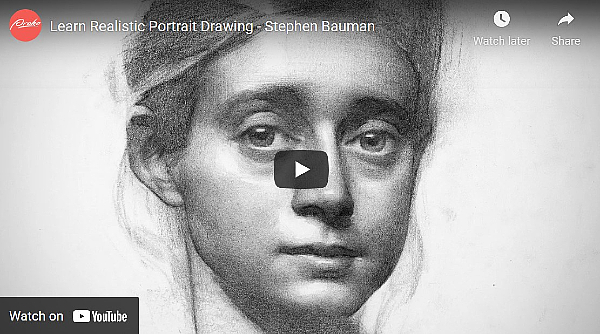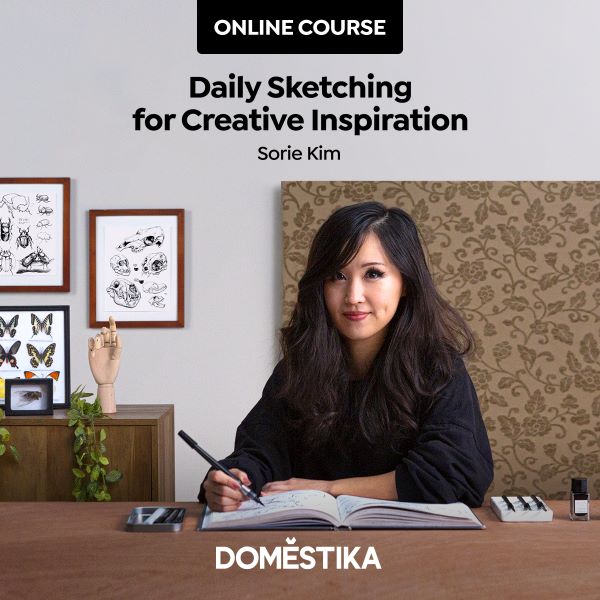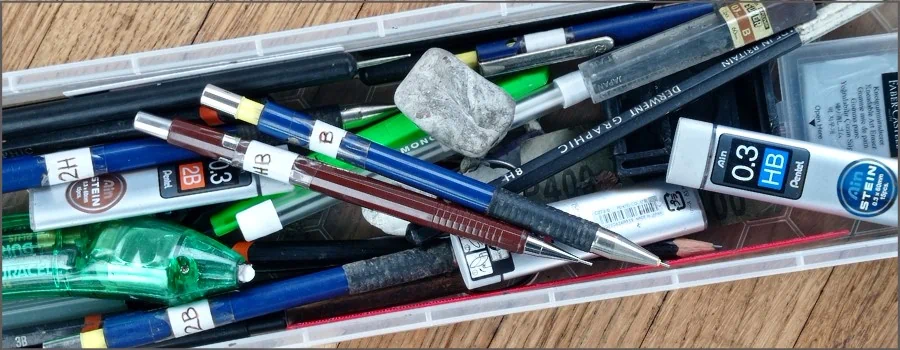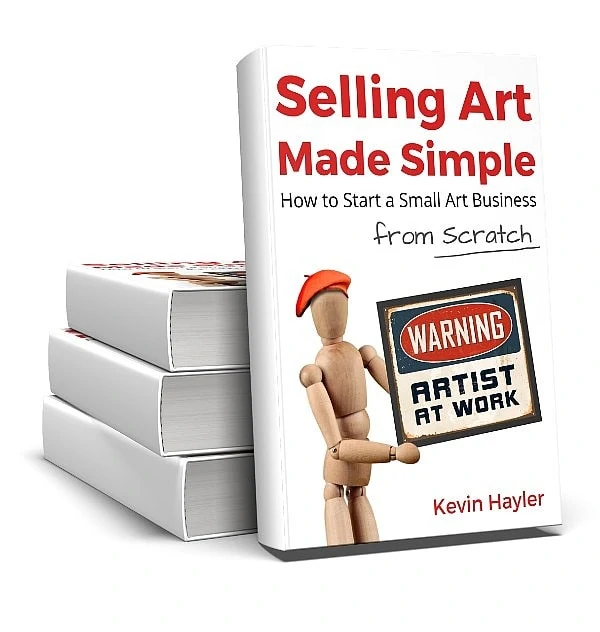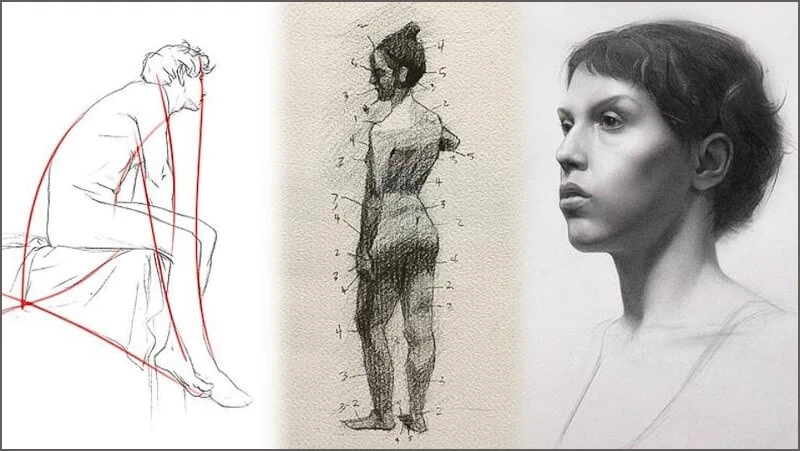Kevin Hayler: Professional Wildlife artist, author, and traveler.
To stand out from the crowd you must develop your own unique signature style. Your art is your brand and in that sense, it should be instantly recognizable. That process starts with the basics of drawing and in this post, I’ll show you how to find your drawing style.
And just as importantly, do you want to sell your art? If so, your artistic style must be acceptable to a critical public.
So how do you hone your drawing skills, find your particular style, and claim it as your own?
Disclaimer: When you buy something via my affiliate links I earn from qualifying purchases and sometimes earn a commission, at no extra cost to you. I am an Amazon Associate among others. I only recommend trusted sites.
Finding Your Drawing Style
There are so many contributing factors involved in finding your own personal style that a few pointers in the right direction will help you to cut corners, get focused, and save you endless time floundering around.
Your own unique style of art is your path to recognition. It’s your brand, logo, and signature all rolled into one. In the commercial world, it’s called your USP, or unique selling point. In an ideal world, anyone coming across your work will instantly know it’s your artwork the moment they see it.
1. Choose Your Favorite Subject Matter
Most popular artists have pigeonholed themselves into an easily identifiable niche. That could be because their type of art involves a passion for a particular hobby, activity, or interest.
They might, for instance, be known for their love of landscapes or portraiture. Some might be recognized for their color palette or indeed, their social commentary, politics, or satire. The list is endless.
What all the well-known artists have in common is their consistency. They repeat their subjects and creative process, over and over again.
That’s far easier to achieve if you have an interest in the world beyond art. Try to identify the most important thing in a subject that makes you want to capture the feeling in your own work.
If you need help choosing a subject read this: What Kind of Art Sells Best? All The Secrets Revealed
And this: Is Subject Matter in Art Important? Advice From a Pro Artist
Combining your interests with your art will sustain you for the long term. If your subject is based on profit alone and not combined with your other interests in life, you’ll soon burn out.
Settle on a subject, or a theme, and stick to it. Be known as the person who draws, or paints, that subject brilliantly well.
The public wants to give you a label and they’ll collect and appreciate the way you work if it’s easily understood, and has a coherent narrative that binds the work together.
Your style and type of drawing might be exceptional, but it’s important to remember that the general public usually buys the subject first. Very few people buy fine art as such.
People buy pictures and mostly representational art, that involves a noticeable craft. They look for connections and stories that resonate with them or their loved ones in a personal and emotional way.
Choose a subject that will keep you happy and interest others.
2. Choose Your Drawing Medium
Your medium will dictate your drawing style as nothing else will. There’s no point in trying to emulate a style of art using drawing techniques that are only achievable by using a different medium entirely.
If you are at the beginning of your journey and have yet to discover the medium that suits you best, there’s no other option but to experiment. Each medium has its own peculiarities, some you will take to naturally, and some you won’t.
This drawing basics course by on Udemy is very popular.
He has over 73,000 students!

In this context, you must find the drawing media that suits you most. You’re not confined to pencil drawing.
Drawing media includes:
- Graphite (inc mechanical pencils)
- Charcoal (Sticks and pencils)
- Conte
- Pastel Pencils
- Soft chalk pastels
- Colored pencils
- Markers
- Pen and ink (Dip pen and Fineliners)
Then there’s silverpoint, etching, and drawing with brushes, which includes ink and watercolor. There are different ways of drawing involving many different skills.
This post is related: What is the Best Type of Pencil to Use With Watercolor?
You must find your specialty, concentrate your efforts, and excel in that medium. Unless you are very adept and talented, it would be best to master one art form before moving on to another.
One way of choosing your drawing medium is to emulate an artist you admire.
3. Copy Your Favorite Artists
We all grow up inspired by one artist or another. That changes as we age but influences can last a lifetime.
Who inspires you? Why do you admire him/her so much? What is it about their body of work that makes you yearn to do something similar?
Read this post if you’re stuck: How Do Artists Get Their Ideas? 5 Tips For Inspiration
I’m not suggesting that you rip them off them, but we all borrow ideas in order to make our own versions of what we see. Everyone does it. It’s called art inspiration and it’s part of the joy of creating something.
“Good artists copy, great artists steal.“
PICASSO
It’s fun to get excited and push ourselves to the limit and discover what we can do ourselves. If that involves an idea sparked off by the work of another artist, then so be it. That artist almost certainly did the same thing before you, and so it goes on.
Here’s the thing, you will not be able to fully replicate another artist’s work, even if you wanted to. We all have different drawing styles, everyone has their own way, and it’s unique, like handwriting.
By trying to draw like someone else, we discover our own unique art style. I’ve discovered Stephen Bauman recently and his style is so good, that it’s inspiring to try some of his drawing techniques.
Stephen Bauman is a classically trained artist and has a very academic approach to his art. This guy knows his stuff and he’s a very good tutor
4. Practice Drawing, Little and Often
I find the best way to stay engaged is to work hard in short bursts. There really is no point in slogging away for hours on end.
For the most part, it’s better to take a piecemeal approach and step back regularly. Putting in long hours might feel productive but it can backfire badly. You can easily lose your way and not see the wood for the trees.
Walking away from your drawing allows you to revisit it with fresh eyes. Sometimes, all you need is a cup of tea and a break, other times you’ll need a day or two, and on rare occasions a few weeks.
When you return, all the time and effort you made mean less and you lose your fear. When your mind is free and your art is less precious, you can judge your work more objectively. Suddenly you can see the faults, and it’s easier to fix them.
It always amazes me how starting afresh, transforms your abilities. Where all was lost, what seemed like an impossible dead-end becomes just another minor error in need of a quick correction.
Your capabilities and your own style of drawing will develop, with fewer problems, when you control your work routine.
5. Know Your Personality Type
Your character will have a direct bearing on your personal art style If you are restless and impatient to get things done, why would you attempt photo-realism? Conversely, if you are a perfectionist and borderline OCD, why try to be fast and loose?
You have little choice but to go with the flow and adapt to the gifts nature gave you. Accept that different artists have different styles and different technical skills.
Make the best of it. If you have an eye for detail and painstaking patience that will, inevitably, dictate your style. If, on the other hand, you see detail as a pointless waste of good painting time, that view will push you in another direction.
We, each of us, have aptitudes and sensibilities that lend us to one style of artwork or another. Embrace your capabilities and don’t try to be something you’re not.
There are so many different art styles, that there will be a niche for you. It may be something completely new. Many artists are discovering the joys of digital drawing, especially using the Procreate app. Why not experiment?
Read this: Is The Procreate App Worth it For Beginners? Get the Facts
Your personality type will also determine the size of your art, and that leads us to the next section.
6. The Size of Your Drawing
What size art do you make? Do you draw big or small?
Are you a person who throws caution to the wind to see what happens or a control freak who draws with pinpoint precision?
This is very much related: What Size Art Sells Best? Frames and Apertures – FREE Chart
The tools you use will be governed by the size of your work. The application, when using those tools, will determine your style. A miniaturist using a magnifying glass will use tools and techniques that differ wildly from the guy making abstract art
That being said, you might find your own drawing style by breaking with convention and discovering a way to use your media differently. For instance, I used to paint 6″ x 4″ landscapes with soft pastels. That’s unusual.
If you look online you’ll also find photo-realistic graphite artists drawing on a giant scale. Breaking the rules can be done.
7. Take Time to Experiment
There is a very real danger of finding an art style that works and resonates with the public and getting stuck in that mode. This happens especially when you sell your art for a living.
Time is money and you don’t want to waste your precious time or risk losing sales, by doing something new.
Inevitably there comes a point when your art becomes stale. That’s why you must spare some time for art experiments to come up with new ideas and different types of drawing. How else can you maintain your interest if nothing ever evolves?
One of the joys of making art is discovering something new and pushing the boundaries of what you thought possible. The excitement, and highs, can last for days when you make a breakthrough.
It’s so important to dream even if it’s just doodling on a notepad. It’s only by freeing up your mind and experimenting with new techniques, compositions, and media, that you can really progress to the next level.
This post is related: What is the Meaning of Media in Art Terms? With Examples
In the end, it’s all about drawing practice. Join Sorie on Domestika and join over 100,000 students taking her sketching classes.
8. Do You Want to Sell Your Art?
Last but not least, do you intend to sell your drawings? If your intention is to earn a living as a professional illustrator or artist, finding your art style is crucial.
With regular daily practice, you will discover a few techniques of your own, there’ll be happy accidents along the way and some tricks that help you get sales. It’s important to capitalize on those successes and repeat them. This creative practice will become your signature art style.
If you want to get art commissions as a freelancer you will need a portfolio of work to show clients. If they see a consistent style of art they can predict the types of art they can expect to receive for their money.
I drew slowly and accurately and only in the final stages of the work did I liven it up. I’d ‘lose’ some hard edges with a few flicks and smudges, and ‘rough’ in the background. It was a contrived spontaneity!
That became my style of portraiture.
Don’t think the greats did anything differently, if they hit on a cash cow they milked it. Why not? I know John Singer-Sargeant did something similar.
Check this out for tips like this: How to Make Your Drawings Interesting: 14 Ways to Improve a Drawing
Take a look at this Harvest Mouse. It is minimalist, full of character, and simple. Sarah is to be found on Domestika
How to Find Your Drawing Style: Final Thoughts
I don’t think you have to spend years of artistic angst and self-torture to find your own art style. It’s inside you now, ready and waiting to be discovered. You can unlock it by finding the subjects that interest you most, and the medium you like best, and then mastering it.
Your drawing style will emerge quickly as you gain confidence, and there are so many directions you can take it, whether you are drawing for pleasure or as a profession.
Don’t be too hard on yourself if you take a wrong turn. It happens to all of us, don’t be afraid to admit defeat occasionally, and move on to something else. You are unlikely to be good at everything.
If I can offer one piece of advice it’s this, stop comparing yourself to others.
I know that’s not easy. We all look at social media and see the most incredible art. Remember that what you see is not always the whole truth. Many artists trace their work and very few show you their failures. I have a folder of crap that I don’t show anyone.
But some artists have reached a level that you or I will never attain, and that can be inhibiting. In the real world, these artists are very rare.
Before the internet, we hardly ever encountered great artists. That’s because there aren’t that many around. Once upon a time, good art was exceptional, now we skim through our Instagram feed and see fantastic art every day.
Instagram in particular, has filtered the best of the best in the world and delivered them to you as normal, and in real life they’re not.
At the end of the day, be inspired by the best, but beat your own path, it’s the only way to find your artistic fingerprint and unique style.
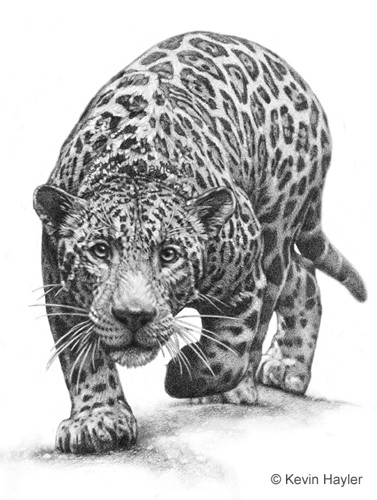
If you like the way I draw and want to try things for yourself, this is my basic kit
When you have settled on a drawing style you’ll want to sell your art. If you want to know how I’ll show you. Take a look!
If you found this article useful you may like these too:
- How to Scale Up a Drawing in 4 Easy Ways and Save Time
- How to Protect and Preserve Your Drawings and Avoid Disaster
- Are Drawing Books Worth It? Can You Learn From Books?
- Drawing Ideas for Adults: 120 Cool and Easy Things to Draw
- How to Know When Your Drawing is Finished: Don’t Ruin it!
- Do You Need to Outline Drawings? YES and Here’s Why…
- Can You Copy Art and Sell a Painting of a Painting? I Found Out
- How Do You Price Your Art? (And Increase Your Profits)
If you need more help with drawing, then I urge you to check out
Dorian Iten on Proko. His course is reasonably priced and inspiring
PIN IT AND SAVE IT


Hi, I’m Kevin Hayler
I’ve been selling my wildlife art and traveling the world for over 20 years, and if that sounds too good to be true, I’ve done it all without social media, art school, or galleries!
I can show you how to do it. You’ll find a wealth of info on my site, about selling art, drawing tips, lifestyle, reviews, travel, my portfolio, and more. Enjoy


